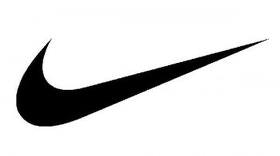NIKE, Inc. (NYSE:NKE) is a world sportswear champion. The brand has become legendary through endorsements and ad campaigns featuring superstars and controversial athletes to spice things up now and then. One thing is for sure: whenever people think of sports, somewhere in their minds they visualize the famous NIKE, Inc. (NYSE:NKE) “swoosh.”

In the recent past, however, there have been concerns regarding the ongoing weakness in China. Let us see what the Middle Kingdom has to offer NIKE, Inc. (NYSE:NKE).
Nike’s position in China
NIKE, Inc. (NYSE:NKE) is the largest international sportswear company in China, holding a market share of 12.1%. In the 2012 fiscal year, the company derived around 12% of its Nike-brand revenue and around 26% of its profits (earnings before interest and taxes) from Greater China (which also includes Taiwan and Hong Kong.)
Unfortunately, the company has recently run into a rough patch in China due to excess inventory buildup. Sales have been falling as products failed to strike a chord with the new-age Chinese buyers. The numerous local producers who are steadily flooding the markets with counterfeits at dirt cheap prices are not helping either. Adding to this is also the economic slowdown.
Taking all of that into consideration, it’s no wonder that sales slipped 9% in the Greater China region in the third quarter. But does this mean that Nike’s dominance in China is coming to an end? Most certainly not!
The China strategy
Currently, the company is in an inventory-clearing phase. It is rapidly opening up factory outlets where it is selling products at heavy discounts. It is also voluntarily cancelling orders in order to rationalize the flow of new products into the market. This will get Nike close to a demand-supply equilibrium over the coming period.
While seeking that equilibrium, Nike is following a three-pronged strategy to position its brand for long-term growth. This strategy places a focus on products, distribution, and brand building.
The company is trying to align its products along the preferences of Chinese customers. It is ensuring that its stores stock fewer niche categories with more choices in size and color. And as always, Nike is working to bring more innovation in high-end sports gear that will add fresh energy to the brand.
The initial signs of the success of this strategy are already visible in same-store sales trends at Nike’s company-owned outlets. In the third quarter, sales in both the comps at the direct-to-customer stores grew by percentages in the mid-teens.
While Nike has not provided a time frame for a full turnaround, analysts at Credit Suisse seem to think that a recovery may be on its way in 2014.
An added edge
High inventories are not just Nike’s problem alone; it is an issue that affects all of the local and international sportswear companies in China. As sellers compete among themselves to offer the lowest prices, we find that a lot of smaller manufacturers are closing up shop.
The situation has been exacerbated by big international brands like Nike joining in on the discounting play. This brings about some consolidation in the fragmented industry and will be a competitive advantage in future.
The six big local brands – Li-Ning, Anta, Xtep, 361, Peak, and China Dongxiang – are also struggling. The biggest challenge that they face is that their merchandise is almost identical. So if Nike can bring some freshness into the market then it can create a strong niche position for itself. It will still have to deal with Adidas, though.
Adidas is putting up a tough fight
The German sports retailer is almost breathing down Nike’s neck. It has grown its market share to 11.2%, recently reporting stellar performance in China in the first quarter. In a season of declines, Adidas grew its revenue by 6% in Greater China on currency-neutral terms.
The company has done a good job with its product line, as well as with inventory management. It has expanded beyond traditional sports gear, venturing into casual fashion apparel, which is currently the rage in China.
Adidas is differentiating its stores based on merchandise. Some outlets specialize in basketball, some in running, some in casual wear, and so on. It is also focusing its product line on providing more sizes and colors as a way to add to the depth of its offerings.
It is promising to be an interesting duel between Nike and Adidas, with both looking toward dominating the lucrative China market.
Opportunity for The Gap (NYSE:GPS)
Another company that is planning to capitalize on the increasing casual fashion trends in China is The Gap Inc. (NYSE:GPS). The company, along with other casual apparel retailers like Zara, has already encroached into the territory that was previously completely occupied by sportswear retailers.
The Gap Inc. (NYSE:GPS) entered China in 2010 and has been rapidly growing its presence ever since. It has already established outlets, specialty stores, and an online business presence in the country. The company is planning to add 35 new outlets in China this year and plans to introduce new brands as well.
The thing to watch out for now is how Gap will perform on its existing price points. Rivals H&M and Uniqlo offer much cheaper ranges. A lot of Gap’s success will depend on effective brand building. This is where management is currently focusing at the moment, trying to build brand presence through its marketing campaigns. To better capture the local market, the company has engaged a local agency to drive its efforts in this regard.
What will China mean for Nike investors?
Despite the recent slump, China remains a huge opportunity for Nike. The sportswear market is expected to grow at a compounded annual growth rate of 17% through the next four years, reaching $32 billion by 2017.
Nike already has a strategy for this market, and going by its track record in other markets it should be able to come out of this slump. As the company is already doing well everywhere else, if it can turn its China operations around then it will be a huge catalyst for future stock growth.
The article Where Does Nike Stand in China? originally appeared on Fool.com.
Eshna De has no position in any stocks mentioned. The Motley Fool recommends Nike. The Motley Fool owns shares of Nike. Eshna is a member of The Motley Fool Blog Network — entries represent the personal opinion of the blogger and are not formally edited.
Copyright © 1995 – 2013 The Motley Fool, LLC. All rights reserved. The Motley Fool has a disclosure policy.


